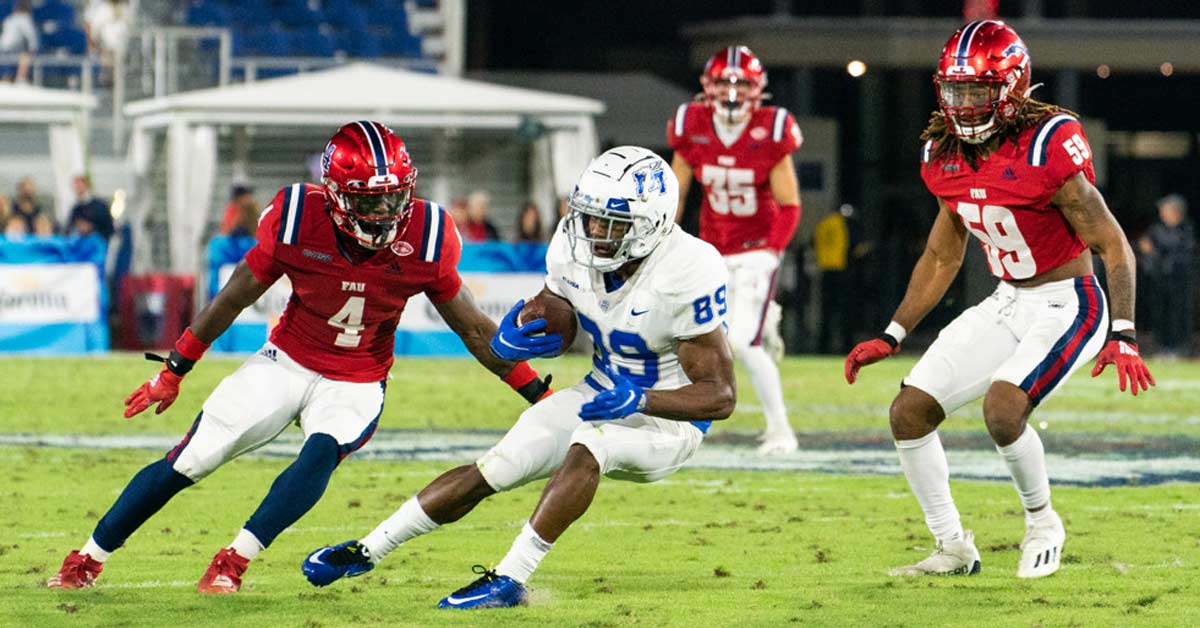Speed is king! Speed of movement, that is. Strength and conditioning professionals get one-track-minded, defining terms in ways that far outreach their meaning. When a coach says speed, the first concept that pops into mind is top mph—the term speed, however, can define the rate of any movement.
Coaches are amazed at how far, how fast, or how high…but what about how fast to stop?, asks @CoachJoeyG. Share on XHit up Twitter any Sunday in the fall, and you will see a flurry of graphics touting the fastest top speeds measured in-game. Full disclosure: I am as guilty of this as anyone. Coaches are amazed at how far, how fast, or how high… but what about how fast to stop?
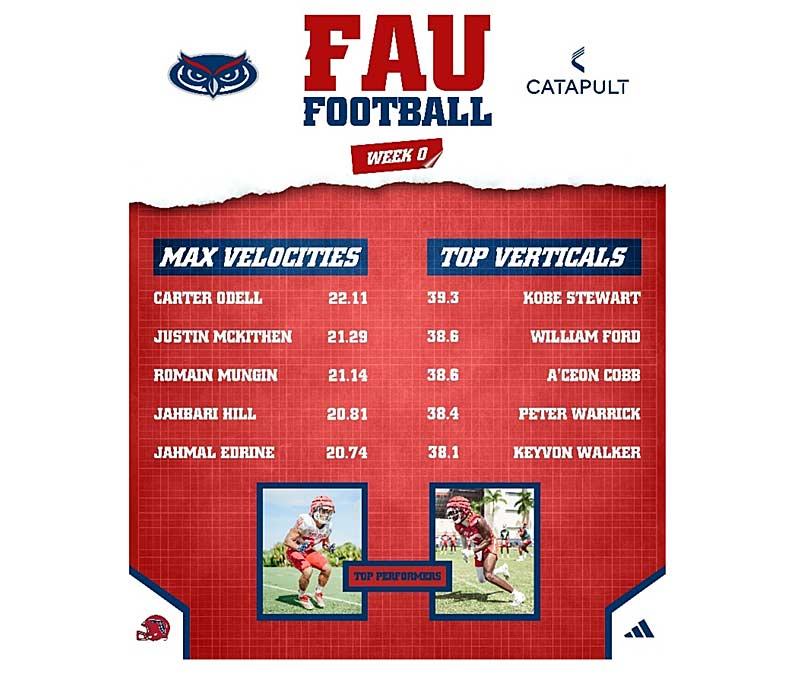
Look at the Combine and the hype behind the 40-yard dash and the emphasis on uninterrupted linear running. In recent years across the strength and conditioning profession, we have seen a shift in what metrics are celebrated and emphasized in training and testing as speed training has become popular. Strength and conditioning coaches have fallen in love with the fact that when an athlete’s max speed increases, so does their ability to separate from defenders or get close to the ball faster. The fact that an increase of 1 mph in max speed leads to 1 yard of distance gained has sent coaches into a tailspin. This concept has refocused many coaches’ program philosophies and sent them to the metaphorical whiteboard to plan and program for more top-speed work.
Elite deceleration, however, can provide more separation than just a yard and happens more frequently than athletes reaching top speeds. Damian Harper stated, “greater braking force may enable decelerations to be achieved more rapidly in shorter time frames and distances.” So, training to increase braking force and rate of force can give players an advantage. Barry Sanders, arguably the best running back in the history of the game, was renowned for his ability to stop and go at unreal rates. Ed Reed, an NFL Hall of Fame safety, could break on the ball in less than 200 milliseconds out of his backpedal, giving him the advantage over the QB due to his elite deceleration capabilities.
Start with the Game
Training emphasis seems to follow trendy waves instead of reverse engineering great performers and the demands of the game itself. If coaches investigated every basic biomechanical aspect of their sport, when realizing that decels have around 3x the amount of ground reaction force while happening in half the amount of time of max velocity GCT, coaches would immediately see the need for planned decel training to increase performance and mitigate injury. “In competitive matches, rapid horizontal decelerations during defensive pressing actions are one of the major situational patterns commonly associated with major lower extremity injuries such as ACL rupture,” states Della Villa in the research paper titled “Significant number of injuries (non-contact) happen while changing direction or in a deceleration action.”
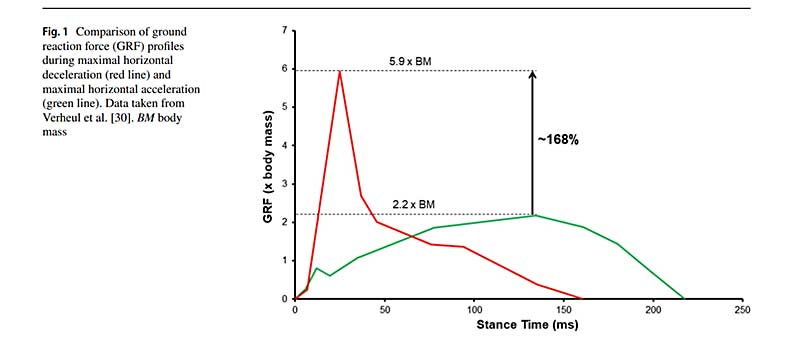
I am all for the current trend of making max velocity sexy and popular, but it is a small piece of the larger puzzle that is improved overall sports performance. Given the extent that strength and conditioning coaches celebrate max velo, you would think that this ability is the Holy Grail of sports performance; in reality, most sports play is performed at submaximal speeds. That’s not to say that we, as strength and conditioning coaches, shouldn’t train this skill—an inability to run at higher speeds leaves athletes at a disadvantage, and the training effect that comes with max velocity exposure is a staple in any successful preparatory program.
There is a necessary level of this general skill to play at certain levels of sport. If the athletes don’t have a requisite level of max velocity capabilities, they are guaranteed failure. Max velocity should be emphasized in the off-season, but with the understanding that it is not the only skill necessary for better sports performance. The athlete who can be fast not only in straight lines but also at stopping and reaccelerating usually is the superior performer.
The athlete who can be fast not only in straight lines but also at stopping and reaccelerating usually is the superior performer, says @CoachJoeyG. Share on XReggie Bush’s insane run versus Fresno State always comes to mind, where he was running at full speed on the sideline and was able to put the brakes on and completely stop before separating and scoring. This cemented him as the favorite in the Heisman race and has become an all-time highlight—elite speed is a weapon, but the ability to regulate that speed with precision braking absolutely changes the game.
The best players must be not only extremely good at acceleration but also great decelerators. Players who can regulate their speeds and play at various speeds have advantages over athletes who cannot. Braking force is a precursor for change of direction, affecting overall performance (unless the athlete competes in track). Training deceleration and the components of deceleration similar to max velocity has global effects on the athlete, elevating many desirable abilities in elite sports performance. This is why training the brakes, as well as top speed and acceleration, is critical in maximizing each athlete’s potential to achieve new heights in their given sport.
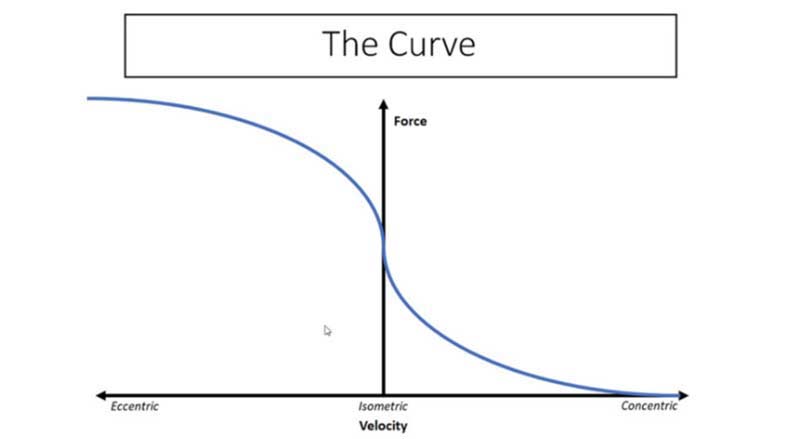
Coaches are looking for any way to give athletes the ability to create and close space. Strength and conditioning coaches aren’t building the metaphorical drag car; we are building F1 cars that navigate the most challenging courses. They must take on the sharpest bends and turns while still outgunning the other vehicles on the straightaways.
The only way to achieve this is to attack all contributing factors to such performance. Jo Clubb recently stated that “deceleration may have been the most overlooked aspect of athletic movement in recent times.” This is an accurate statement—as coaches look at sports from a biomechanical view, it is apparent that the necessity to train the brakes with equal emphasis, if not more volume, than its counterpart can lead to a great return on investment. This is backed up by recent research from Damian Harper and his crew describing the necessity of deceleration training not only from a performance standpoint but from an injury resiliency point of view as well. The best ability is availability, because what’s the point of having a Ferrari if it doesn’t have brakes and is always in the shop?
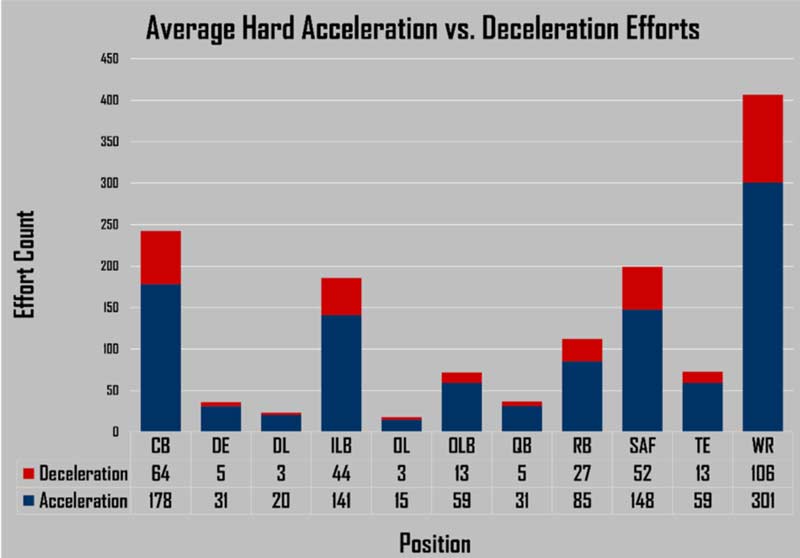
Impulse and Why Newton’s Laws Govern Sports Performance
If strength and conditioning coaches don’t understand movement at its basic level and the factors that affect it, how can they prescribe training that increases the rate and force of execution in sports motion? The reason athletes train is to be more resilient to the demands of the sport and to increase the rate of execution of sports motion!
To accomplish this mission statement, strength and conditioning coaches have to understand force, the momentum-impulse relationship, and Newton’s three laws to recognize the physical capacities needed to improve sports performance and performance training. Force is a word thrown around frequently in the strength community, often without a complete level of understanding. What is a force? It’s a simple question that is extremely difficult to answer. As Dan Cleather states in his book, Force, “A force is an attempt to describe why things move. Force actually describes the changes in motion.” This can be seen in Newton’s laws:
- First law (object remains at rest unless acted upon by another object)
- Second law (F=MA)
- Third law (equal and opposite direction)
Movement, in some form or fashion, revolves around a body and a collision with the environment. At the simplest and most basic level, an impulse is a descriptor of this collision. Impulse measures the force and time relationship. From a physics standpoint, impulse is described in a formula the same as momentum:
-
I=m x v or p=m x v
Momentum is a term that strength and conditioning and sports coaches understand—it has been noted countless times that an athlete’s momentum was too much for the defender, and that’s why they ran through them. To increase the momentum of an object—which would be either an increase or decrease in velocity if the mass stayed constant—an impulse must be applied.
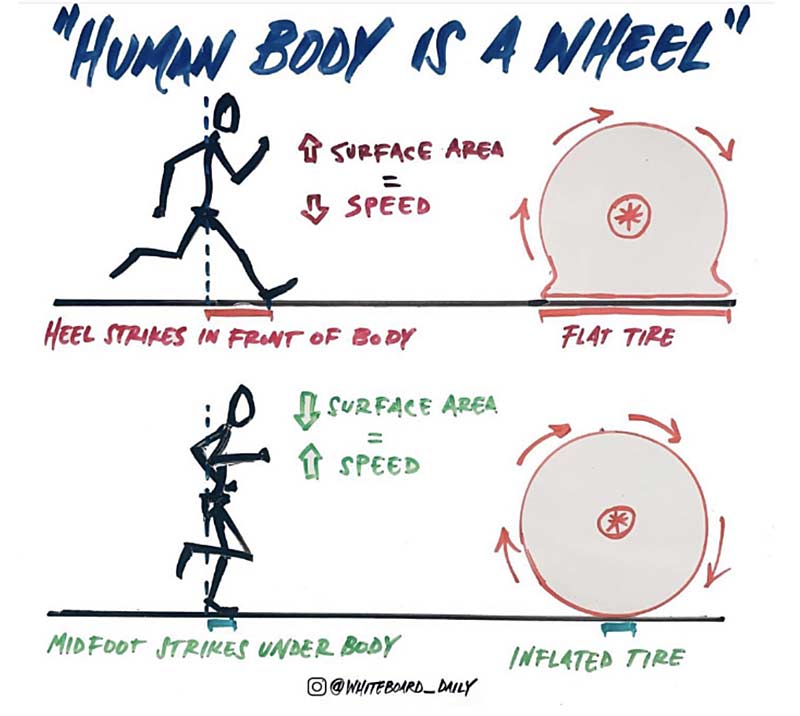
We see in movement that the larger the impulse, the higher the rate of the change in velocity. The change can be defined as positive or negative depending on where the force is applied. This concept is easy to understand in figure 5: As the athlete looks to increase speed, a forceful push under the COM must be applied to the ground to propel the athlete up and forward with an increase in velocity. The harder the push, the higher the increase in velocity. This is why many people argue about the value of weightlifting in increasing speed. Stronger athletes can apply more force and have higher levels of impulse if used in the same amount of time.
The magnitude of the impulse isn’t the only determining factor, as the direction in which it is applied will either cause propulsion or deceleration in our running example. This means that impulses can be, in simple terms, negative (braking) and positive (propulsive), based on where the force is applied. So, take the same concept and apply it to braking. The faster the entry speed, the higher the level of “negative impulse” needed in the front of the athlete’s COM to slow them down.
Capacities on Both Sides of the Curve
Strength is task specific—by this, I am stating that impulse is governed by the rate of force, specifically in running, stopping, and change of direction movements, as there is limited time to apply force. Most sports movements will be conducted under the 400 milliseconds threshold, putting a premium on the rate of force development (RFD). Strength is only as good as the ability to utilize it. What is the point of a 1,000-pound deadlift that takes six seconds when comparing transfer to sport? Speed is king in all movements, so the athlete who can exert the highest amount of force at the fastest rate and in the right direction usually wins.
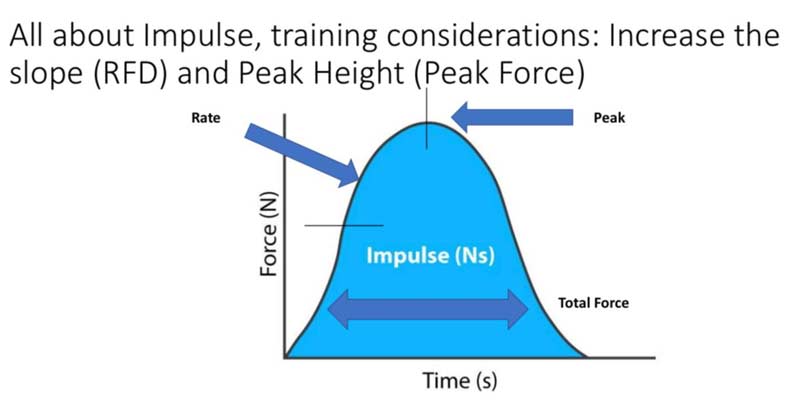
The direction of the application of force will also determine the primary muscle contraction involved. Propulsive actions like acceleration are primarily concentric-dominant. Braking actions, like deceleration, will be principally eccentric in nature due to where the force is being directed. We see this concept in sports when talking about sprinting—applying high force in minimal time—and deceleration, where both actions require extremely high impulses to change velocity. In both examples (sprinting and decelerating), high levels of force are applied to the ground in short time frames (50–150 milliseconds).
Creating braking reserves where the athlete can handle extreme forces to better prepare them for lower threshold exposures is vital in performance and for injury resiliency. Charlie Francis made speed reserve a known term, where an athlete with a higher max velocity when fatigued can handle higher speeds. Apply this same concept to deceleration, as the impulse is extremely similar: the force is just oriented in a different direction. Looking through a biomechanical lens, sprinting and deceleration are very similar when examining the impulse or waveforms of the actions.
Creating braking reserves where the athlete can handle extreme forces to better prepare them for lower threshold exposures is vital in performance and for injury resiliency, says @CoachJoeyG. Share on XThe strength and conditioning coach is responsible for determining the main sports actions, their time parameters, whether they are propulsive or decelerative, and the common impulse curve associated with them. Impulse training can be broken into three categories when describing physical capacities:
- Peak force (the height of the curve)
- Rate of force (the slope)
- Total force (total area under the curve)
These three categories can be viewed as how much, how fast, and the total amount. Viewing training through a biomechanical lens allows for simplicity in understanding the capacities necessary to enhance skills. Webster defines a capacity as “the amount that something can produce.”
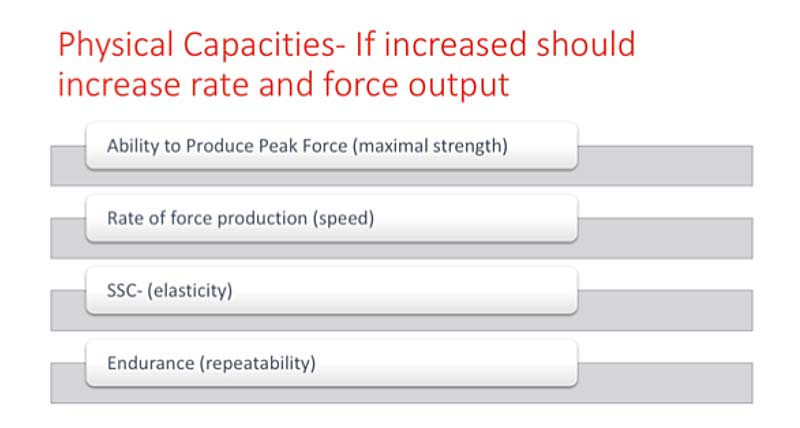
In this example, the athlete produces and expresses capacities while performing a given skill. If capacities are limiting, the athlete’s motion will be slower or altered due to an inability to express force levels adequate enough to be successful in that movement. Capacities are the “big rock” training abilities that strength and conditioning coaches look to increase through training prescription.
I classify four main categories of physical capacities. Training should look to increase:
- Concentric and eccentric peak force capabilities (maximal force production).
- Concentric and eccentric rate of force capabilities (the rate at which the force is produced).
- Reactive strength (utilization of the stretch-shortening cycle).
- Endurance (the body’s ability to repeat an activity).
Training must be applied to concentric and eccentric actions, and both are seen in many sporting movements. This lens establishes the need for both braking and propulsive training.
The need for eccentric training becomes apparent when the general biomechanical demands of sports are investigated. Look at sprinting, as Peter Weyand and Ken Clark found that elite sprinters can decelerate the lower limb in the two-mass model faster than regular team sport athletes. The elite sprinters’ impulse curve, or waveform, should show much higher levels of eccentric peak force and eccentric rate of force.
Video 1. If trained and emphasized, eccentric peak force and RFD could catapult many general skills.
Looking through a biomechanical lens also allows practitioners to reverse engineer the true demands of the sport, enabling training to better prepare the athletes by increasing the underpinning physical capacities that feed general skills. Sport motion hinges on the level of impulse expressed, which is determined by the athlete’s physical capacities. Coaches must consider the negative and positive impulses expressed in sport and the mechanical stress associated with both because they have very different effects on the body and other associate adaptions from exposures.
F=MxA, So Deceleration Is Negative Acceleration
To accelerate at a faster rate, more force must be applied if the mass is constant. To stop at a faster rate, more force must be applied if the mass is constant.
Why do S&C coaches get accelerative-biased when it is evident that training can positively affect both acceleration & deceleration? The formula may be the same, but the training modalities are not. Share on XWhy do strength and conditioning coaches get accelerative-biased when it is evident that training can positively affect both acceleration and deceleration? The formula may be the same, but the training modalities are not.
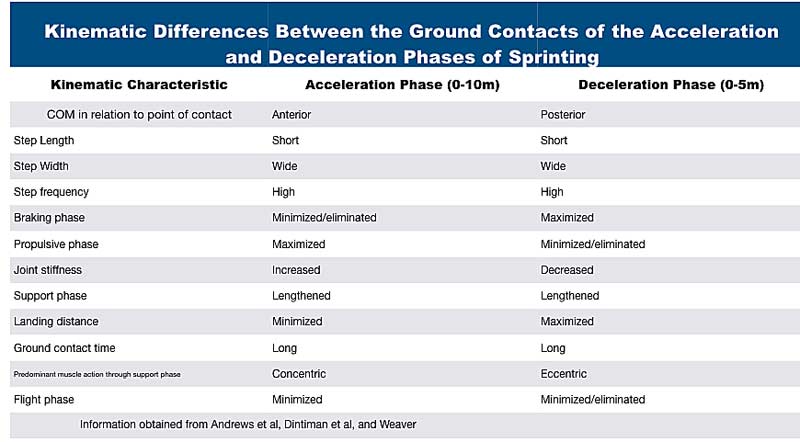
Damien Harper defines deceleration as:
-
“[The] ability to proficiently reduce whole-body momentum, within the constraints, and in accordance with specific objectives of the task, while attenuating and distributing the forces associated with braking.”
Several aspects of this definition reinforce the understanding of impulse and general biomechanics. There is a direct connection between impulse and momentum. The first part I would like to highlight is the phrase “whole-body momentum,” which points back at the equation:
-
P=MxV
or
Impulse=MxV
In collision sports, momentum and the ability to control it are desirable. The more momentum brought into contact, the higher the success rate of that collision. The rate at which an athlete can accelerate and decelerate is a direct indicator of the production and application of impulse and the control of momentum.
To increase the ability to affect momentum, the impulse curve components tell us how important it is to focus on training physical capacities related to high impulse (peak force and rate of force). These should be trained from a propulsive and decelerative stance, as a sport requires many stop-and-go tasks. From the article “Effect of eccentric overload training on change of direction speed performance: A systematic review and meta-analysis”:
-
“Green and colleagues found that the players who generated greater braking forces were able to accelerate into the new direction earlier, so they can accomplish the change-of-direction task more quickly” (Green et al., 2011). In addition, faster athletes undergoing several change-of-direction tests produced shorter contact times when compared to slower athletes (Spiteri et al., 2015). Studies showed that shorter braking time may enable a faster transition into the propulsive phase of the movement, increase propulsive force application, and improve CODS performance.”
It is safe to say that high levels of eccentric peak force and rate of force are necessary to express COD tasks and affect the most movements. If these eccentric capacities are increased, the ability to change momentum will also increase, leading to faster motion. Performance increases through an even 50/50 split in training concentric to eccentric can yield impressive results in both decelerative and propulsive movements. This improvement can be attributed to the ability to have faster and more violent cycling through the stretch-shortening cycle.
Performance increases through an even 50/50 split in training concentric to eccentric can yield impressive results in both decelerative and propulsive movements, says @CoachJoeyG. Share on X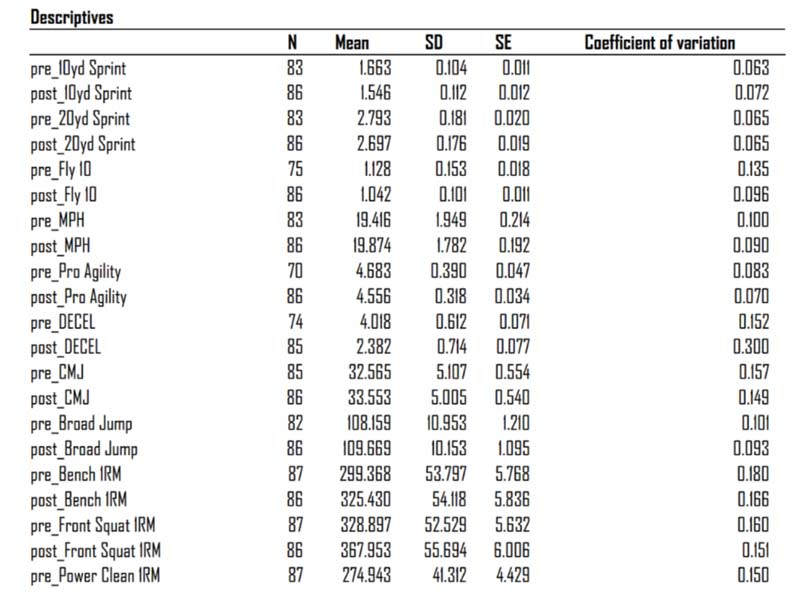
In the research paper “Kinetic demands of sprinting shift across the acceleration phase,” Nagahara states, “some level of eccentric muscle stretch and elastic energy storage is likely a requisite for powerful propulsion through the utilization of the SSC.” The undeniable eccentric actions prevalent in successful sports motions such as COD and sprinting will force strength and conditioning coaches to venture to the left side of the force-velocity curve, which is the world of eccentrics.
In the simplest definition, an eccentric muscle action is one where the muscle lengthens. When looking at deceleration, the primary muscle contraction will be eccentric, as the muscles lengthen at extremely rapid rates. Training eccentrically also satisfies the principle of S.A.I.D. (specific adaptions to imposed demands): If the goal of training is to increase sports motion and create a shield against the repetitive nature of the sport, not training eccentric along with concentric movement is doing only half the job.
In one of the many extraordinary research papers written by Dr. Harper, “High-Intensity Acceleration and Deceleration Demands in Elite Team Sports Competitive Match Play: A Systematic Review and Meta-Analysis of Observational Studies,” he states: “To ensure that elite players are optimally prepared for the high-intensity accelerations and decelerations imposed during competitive match play, it is imperative that players are exposed to comparable demands under controlled training conditions.” This goes back to the S.A.I.D. principle and the principle of specificity spoken about above in the form of general skill development feeding specific skills.
What Is Improvement in Sports Performance?
Strength and conditioning coaches all claim that the programs they prescribe, if thoroughly executed, create better players in the sport those athletes are training for. Strength and conditioning coaches go on job interviews or present to other coaches, and we tout our accomplishments, but do improvements in general strength and speed help an athlete be better than before at their given sport? How do you know that the prescribed program led to higher sports performance?
Strength and conditioning coaches can argue injury rates, KPI enhancements, and wins and losses, but there are limits to any potential reason being the only answer to the question. This rabbit hole has led me down a path to one of the first books I picked up in pursuit of strength and conditioning knowledge: Science and Practice of Strength Training. The answer to the question came in the simplest form, with Zatsiorsky stating, “when sports performance improves, the time of motion turns out to be shorter.”
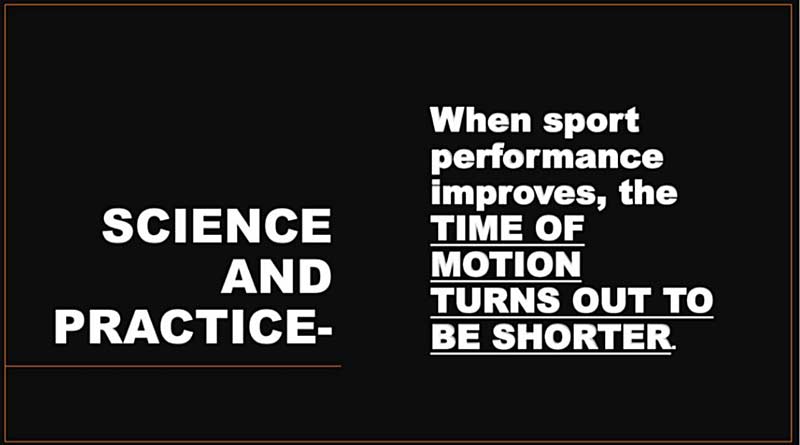
This satisfied the original question, how to measure if sports improvement was being made, but unfortunately sparked another question—what is motion as it pertains to specific sports?
This question fueled an intense investigation into what can be defined as sports motion. The common theme on this journey to knowledge was the word skill. Webster defines skill as “the ability to do something well, expertise.”
Being more skilled in sport means that an athlete has the ability to control their body accurately, efficiently, and promptly, which would provide faster sports motion. This essentially means that the more skills developed, the more an athlete can express physical capacities that result in a faster time of motion in sport. Players can express force more rapidly and with higher levels if they are more skilled.

- General skills.
- Specific skills.
Fair warning, this is not a new concept, as most of Bondarchuk’s work was centered around this and is far more thought-out and detailed than my interpretation of it.
If coaches can’t classify the underpinning skills of sports motion, how can they plan and prescribe training to further develop those skills?, asks @CoachJoeyG. Share on XDeceleration Skills, the Forgotten Training Element
Deceleration actions are prevalent in most sports and can be classified as a general skill set. General skills should be general movement signatures commonplace in sports. Each sport has its general and specific skills, though there are numerous similarities among most field and court sports.
These movement signatures are classified as skills due to the technical requirements that must be rehearsed to tap the athlete’s potential and groove motor patterns fully. Deceleration in the above-mentioned general skills is usually the odd man out in terms of training prescription. There must be focused repetitions to gain movement competency to get better at a skill. In each of these general skills, there are physical capacities that, if increased, would increase the general skill without alteration of technique and increase the speed of motion. If not trained, the principle of reversibility takes hold—if you don’t use it, you lose it.
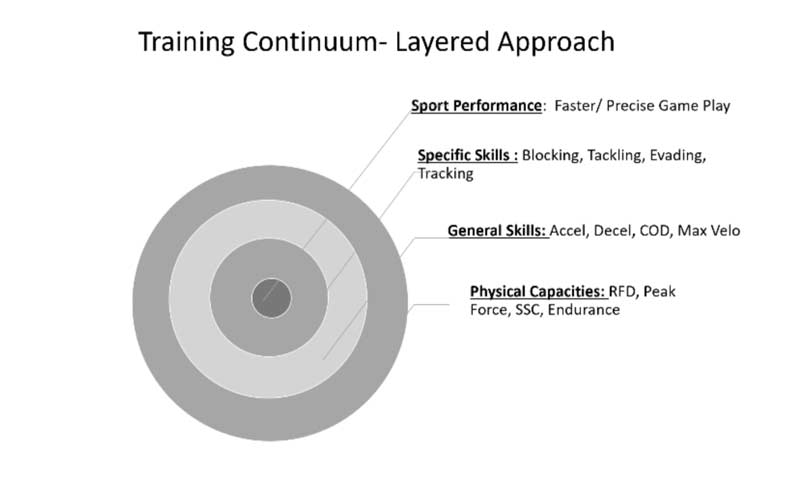
Skill is king when looking at elite performers in any sport, but it hinges upon the necessary physical capacities to express force in these skills. This example shows that there are certain levels of capacities needed to prevent failure in sports. This is why all general skills should be rehearsed, and their underlying components should be emphasized in training.
In the next article, I will discuss the injury reduction strategies and performance improvements seen when emphasizing deceleration and eccentric training. I will also look at specific modalities that enhance the underpinning capacities of deceleration.
Lead Photo by Aaron Gilbert/Icon Sportswire
Since you’re here…
…we have a small favor to ask. More people are reading SimpliFaster than ever, and each week we bring you compelling content from coaches, sport scientists, and physiotherapists who are devoted to building better athletes. Please take a moment to share the articles on social media, engage the authors with questions and comments below, and link to articles when appropriate if you have a blog or participate on forums of related topics. — SF
References
Clark KP and Weyand PG. “Are running speeds maximized with simple-spring stance mechanics?” Journal of Applied Physiology. (1985). 2014 Sep 15;117(6):604–15. doi: 10.1152/japplphysiol.00174.2014. Epub 2014 Jul 31. PMID: 25080925.
Colyer SL, Nagahara R, and Salo AIT. “Kinetic demands of sprinting shift across the acceleration phase: Novel analysis of entire force waveforms.” Scandinavian Journal of Medicine & Science in Sports. 2018 Jul;28(7):1784-1792. doi: 10.1111/sms.13093. Epub 2018 Apr 25. PMID: 29630747.
Grassi A, Nabiuzzi A, Tosarelli F, Zafagnini S, et al. “Systematic video analysis of ACL injuries in professional male football (soccer): injury mechanisms, situational patterns and biomechanics study on 134 consecutive cases.” British Journal of Sports Medicine. 2020;54:1423–32.
Harper DJ, Carling C, and Kiely J. “High-Intensity Acceleration and Deceleration Demands in Elite Team Sports Competitive Match Play: A Systematic Review and Meta-Analysis of Observational Studies.” Sports Medicine. 2019 Dec;49(12):1923–1947. doi: 10.1007/s40279-019-01170-1. PMID: 31506901; PMCID: PMC6851047.
Harper DJ, McBurnie AJ, Santos TD, et al. “Biomechanical and Neuromuscular Performance Requirements of Horizontal Deceleration: A Review with Implications for Random Intermittent Multi-Directional Sports.” Sports Medicine. 2022 May;52:2321–2354.
Hewit J, Cronin J, Button C, and Hume P. “Understanding Deceleration in Sport.” Strength and Conditioning Journal. 2011;33(1):47–52. doi: 10.1519/SSC.0b013e3181fbd62c.
Liu R, Liu J, Clarke CV, and An R. “Effect of eccentric overload training on change of direction speed performance: A systematic review and meta-analysis.” Journal of Sports Sciences. 2020 Nov;38(22):2579–2587. doi: 10.1080/02640414.2020.1794247. Epub 2020 Jul 17. PMID: 32677542
Yu B and Garrett WE. “Mechanisms of non-contact ACL injuries.” British Journal of Sports Medicine. 2007 Aug;41 Suppl 1(Suppl 1):i47–51. doi: 10.1136/bjsm.2007.037192. PMID: 17646249; PMCID: PMC2465243.

